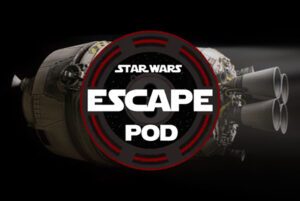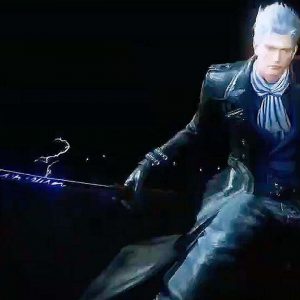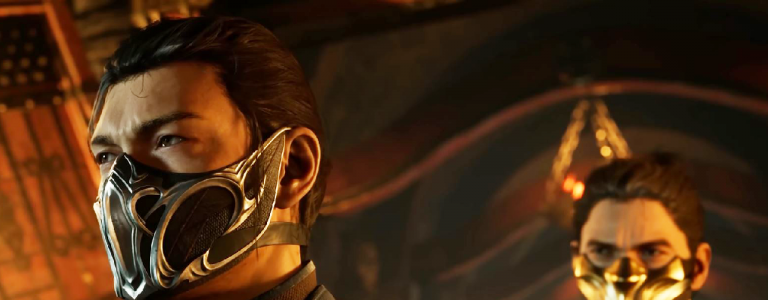[ad_1]
A twisted first-person adventure in a world where Nikola Tesla’s ideas came to life.
Close to the Sun is an enthralling alternate-history thriller that explores the implications of a reality in which all of Nikola Tesla’s ambitious, wild, and often deranged ideas came to life. Some pacing problems and repetitive trial and error segments can make it a bit inconsistent at times, but it still does a wonderful job of letting you get lost in its captivating corridors.
In Close to the Sun you play as Rose, an inquisitive journalist who comes aboard Tesla’s city-sized ship, known as the Helios, to find and rescue her sister Ada. It doesn’t take long for events to go sideways as things are very much not as they seem. While the story starts out slow, there are plenty of lingering questions and bizarre mysteries going on that effectively held my attention to the end of its roughly six-hour playtime.
Close to the Sun wears its inspirations on its sleeve, proudly. The beautiful art deco designs are reminiscent of BioShock’s Rapture and the combat-less gameplay lifts heavy inspiration from the likes of Outlast. The pieces aren’t original at all, but Close to the Sun puts everything together in a unique way that feels like a super-concentrated dose of the best parts of “walking simulators” – a genre label I don’t love, but is pretty appropriate in this case. And even though I wouldn’t call it a horror game, there are a lot of gruesome, terrifying moments throughout.
“
It will pull you in as long as you’re in the right mood for its slow-paced world building.
You spend most of your time walking down hallways, looking for clues, reading notes, and unlocking the next area of the ship by solving brief brain teasers like memorizing symbols on geometric objects or hunting down passcodes on pieces of paper. It can be a bit boring at times, but if you’re in the right mood for its slow-paced world building, its excellent sound design will pull you in. Voice acting is top-notch, ambient sounds really set the mood, and the moments of deafening silence become just as important and powerful as the sparsely placed music.
The problem with these sorts of games is just how crucial pacing is. If you get stuck on a puzzle due to forgetting a shape, can’t figure out where to go because of multi-level maze-like map layouts, or don’t trigger the exact right thing you were supposed to do because you weren’t looking the right spot when you entered the room, then it creates a suffocating dullness. At three points I briefly got lost or couldn’t quite figure out what to do for longer than expected because of obtuse puzzle design not making it clear what I should look for and it really soured the tone. It’s not so much that puzzles are difficult, but more so that many of them involve memorization and trial-and-error segments that can be a bit tedious.
There are also a handful of chase sequences that really felt out of place. During these scenes you have to perfectly navigate mazes and jump over objects at the right time and make the correct turns until the end. If you mess up and get caught, you’re instantly dead and have to start over. Replaying the same section, bookended by short loading screens, over and over can be extremely tedious, especially because it doesn’t do a great job of making it clear where you’re supposed to go with unpredictable debris or closed-off passageways blocking your way. Hitting a dead end I had no way of planning for and then being forced to redo the entire chase was never fun.
“
Close to the Sun is at its best when it really leans into the alternate-history angle.
You’ll see a handful of other characters periodically, but most exposition is delivered through conversations over radio signals between Rose and other characters – which is honestly a good thing because, despite how gorgeously detailed the environments are, every time a character is on screen their stiff animations distractingly stick out.
Close to the Sun is at its best when it really leans into the alternate-history angle. There is one bit in particular very early on that has you walk through a portion of the ship that acts like a museum of Tesla’s most iconic inventions. At each station you can listen to an audio recording of Tesla describing the invention to you and, for a few brief minutes, his genius is laid bare. I loved hearing about the lofty ideas behind the Death Ray, a weapon so powerful it would end all war out of fear, or the Tesla Tower and its wireless energy transmissions. It’s a great scene that helps build up the grandeur of his character in the face of an otherwise-crumbling reputation in this fictional universe.
Before long, you start to see echoes of past moments throughout the ship. Specks of what is referred to as “chaotic energy” form vague silhouettes of people talking, mingling, and walking around – thankfully they’re so esoteric they don’t really suffer from the same animation issues as the full character models. It’s got an eerie quality and does a good job of making the Helios feel lived in, and occasionally these echoes lead the way through a section or provide a hint for puzzles. They’re a neat visual tool that never gets tiresome or overused.
The Verdict
Close to the Sun is one of the best examples of the “walking simulator” style of adventure game I’ve seen in quite some time. It does a wonderful job of blending the visual style of BioShock with the tense atmosphere of Outlast and slow-paced world-building of Everybody’s Gone to the Rapture. While the sometimes-obtuse puzzles and slow pacing can cause frustration and repetition, this is a harrowing and thoughtfully designed adventure from start to finish.
[ad_2]
Source link
























